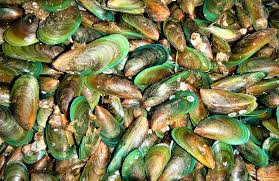കല്ലുമ്മക്കായയുടെ ജനിതക രഹസ്യം കണ്ടെത്തി കേന്ദ്ര സമുദ്രമത്സ്യ ഗവേഷണ സ്ഥാപനം (സിഎംഎഫ്ആർഐ). ക്രോമസോം തലത്തിൽ കല്ലുമ്മക്കായയുടെ ജനിതക ശ്രേണീകരണം സിഎംഎഫ്ആർഐ വിജയകരമായി പൂർത്തിയാക്കി. കല്ലുമ്മക്കായയുടെ കൃഷിയിൽ വൻമുന്നേറ്റത്തിന് വഴിയൊരുക്കുന്നതാണ് കണ്ടെത്തൽ. മാത്രമല്ല, ജലാശയ മലിനീകരണം എളുപ്പത്തിൽ മനസ്സിലാക്കാനും ഭാവിയിൽ കാൻസർ ഗവേഷണങ്ങളെ സഹായിക്കാനും നേട്ടം ഉപകരിക്കും. നേരത്തെ, മത്തിയുടെ ജനിതകഘടനയും സിഎംഎഫ്ആർഐ കണ്ടെത്തിയിരുന്നു.
സിഎംഎഫ്ആർഐയിലെ പ്രിൻസിപ്പൽ സയന്റിസ്റ്റ് ഡോ സന്ധ്യ സുകുമാരന്റെ നേതൃത്വത്തിലുള്ള ഗവേഷക സംഘമാണ് ജനിതക ശ്രേണീകരണം നടത്തിയത്. കേന്ദ്ര ബയോടെക്നോളജി വകുപ്പിന്റെ (ഡിബിടി) സാമ്പത്തിക സഹായത്തോടെയായിരുന്നു ഗവേഷണം.
ജലകൃഷി രംഗത്ത് കേരളത്തിലടക്കം ഏറെ വാണിജ്യ-പ്രാധാന്യമുള്ളതാണ് കല്ലുമ്മക്കായ കൃഷി. അവയുടെ വളർച്ച, പ്രത്യുൽപാദനം, രോഗപ്രതിരോധം എന്നിവയുമായി ബന്ധപ്പെട്ട സുപ്രധാന ജനിതകവിവരങ്ങളാണ് പഠനത്തിലൂടെ കണ്ടെത്തിയത്. രോഗപ്രതിരോധ ശേഷിയുള്ളതും ഉൽപാദനക്ഷമത കൂടിയതുമായ ജീനോമുള്ള കല്ലുമ്മക്കായകളെ കണ്ടെത്തി പ്രജനനം നടത്താൻ ഇത് സഹായിക്കും. കൃഷിയിലൂടെ കല്ലുമ്മക്കായയുടെ ഉൽപാദനം ഗണ്യമായി കൂട്ടുന്നതിന് ഇത് വഴിതുറക്കുമെന്ന് സിഎംഎഫ്ആർഐ ഡയറക്ടർ ഡോ ഗ്രിൻസൺ ജോർജ് പറഞ്ഞു.
സാധാരണയായി വ്യാപകമായി കാണപ്പെടുന്ന പരാദ രോഗങ്ങളാണ് നിലവിൽ കല്ലുമ്മക്കായ കൃഷിക്ക് ഏറ്റവും വലിയ ഭീഷണി ഉയർത്തുന്നത്. എന്നാൽ, ജീനും ജനിതകഘടനയും വിശദമായി മനസ്സിലാക്കുന്നതിലൂടെ, ഇവയെ പ്രതിരോധിക്കാൻ കഴിയുന്നെ് ഗവേഷകർ കരുതുന്നു.
കാൻസറുമായി ബന്ധപ്പെട്ട ഗവേഷണത്തിന് ഉപകരിക്കുന്ന ഒരു പുതിയ മാതൃക ജീവിവർഗമായി കല്ലുമ്മക്കായയെ പ്രയോജനപ്പെടുത്താനുള്ള സാധ്യതകൾ തുറന്നിടുന്നതാണ് ഈ പഠനമെന്ന് ഡോ സന്ധ്യ സുകുമാരൻ പറഞ്ഞു. കാൻസറുമായി ബന്ധപ്പെട്ട ഗവേഷണങ്ങൾക്ക് വെളിച്ചം നൽകാനും പുതിയ സങ്കേതകങ്ങൾ വികസിപ്പിക്കാനും കല്ലുമ്മക്കായയുടെ ജനിതകവിവരങ്ങൾ പ്രയോജനപ്പെടും. കാൻസർ പ്രതിരോധശേഷിയുള്ളത് ഉൾപ്പെടെ കല്ലുമ്മക്കായയിലെ മൊത്തം 49,654 പ്രോട്ടീൻ കോഡിംഗ് ജീനുകൾ ഗവേഷകർ തിരിച്ചറിഞ്ഞിട്ടുണ്ട്.
കായലുകളിലും കടലിലും ജൈവനിരീക്ഷണത്തിന് ശേഷിയുള്ളതാണ് കല്ലുമ്മക്കായ. വലിയ അളവിൽ ലോഹങ്ങളും മറ്റ് പാരിസ്ഥിതിക മലിനീകരണങ്ങളും തിരിച്ചറിയാനും പ്രതിരോധിക്കാനും കഴിവുണ്ട്. ഇതുമായി ബന്ധപ്പെട്ട ജീനുകളെ തിരിച്ചറിയുന്നതിലൂടെ ജലാശയ പാരിസ്ഥിതിക നിരീക്ഷണം കൂടുതൽ കൃത്യവും ഫലപ്രദവുമാകും. ജനിതകവിവരങ്ങളുടെ സഹായത്തോടെ വികസിപ്പിക്കുന്ന ജനിതക മാർക്കറുകൾ കൊണ്ട് ഇത്തരത്തിൽ മലിനീകരണങ്ങൾ മനസ്സിലാക്കാനാകുമെന്ന് സിഎംഎഫ്ആര്ഐയിലെ ഗവേഷകർ പറഞ്ഞു. വെള്ളത്തിലെ പിഎച്ച്, താപനില, ലവണാംശം തുടങ്ങിയവയോട് വളരെവേഗം പൊരുത്തപ്പെടുന്ന ജീവിയാണ് കല്ലുമ്മക്കായ. ജീനോം ഡീകോഡിംഗ് വഴി ജലമലിനീകരണവും വെള്ളത്തിലെ മാറ്റവും പെട്ടെന്ന മനസ്സിലാക്കാനുള്ള അവസരം കൈവരും.
നേച്ചർ ഗ്രൂപ്പിന്റെ സയന്റിഫിക് ഡാറ്റ ജേണലിലാണ് ഗവേഷണം പ്രസിദ്ധീകരിച്ചത്. ഡോ എ ഗോപാലകൃഷ്ണൻ, വി ജി വൈശാഖ്, ഡോ വിൽസൺ സെബാസ്റ്റ്യൻ, ഡോ ലളിത ഹരി ധരണി, ഡോ അഖിലേഷ് പാണ്ഡെ, ഡോ അഭിഷേക് കുമാർ, ഡോ ജെ കെ ജെന എന്നിവരും ഗവേഷണത്തിൽ പങ്കാളികളായി.
CMFRI decodes genome sequence of Asian green mussel
In a significant breakthrough on bivalve research, the ICAR-Central Marine Fisheries Research Institute (CMFRI) has unearthed the genome secret of Asian green mussel (Perna viridis). This is the first-ever chromosome level genome sequencing of a marine invertebrate species from India. Earlier, CMFRI had come out with a similar genome finding for Indian oil sardine.
The Asian green mussel, Kallummakkaya in local parlance, is an important aquaculture species in the family Mytilidae contributing substantially to molluscan aquaculture.
CMFRI’s research found that the mussel’s genome contains 723.49 Mb in size and is anchored into 15 chromosomes. The research was published in the journal Scientific Data by Nature Group.
“The development will be a game-changer in boosting sustainable mussel aquaculture in the country, as this research will help gain insights into its growth, reproduction and disease resistance”, said Dr Grinson George, Director of CMFRI.
The findings will benefit the aquaculture sector by improving genomic selection and breeding practices, leading to enhanced productivity and resilience in fisheries, he added.
A team of researchers from CMFRI led by Principal Scientist Dr Sandhya Sukumaran carried out this study with funding support from the Department of Biotechnology, NewDelhi. The team includes Dr A Gopalakrishnan, V G Vysakh, Dr Wilson Sebastian, Dr Lalitha Hari Dharani, Dr Akhilesh Pandey, Dr Abishek Kumar and Dr J K Jena.
Combating diseases
According to scientists, this will help develop new strategies to combat diseases in the mussel.
“Genomic investigations on this species are vital to understand genes, gene combinations and signaling pathways leading to the parasitic diseases, which constitute a major threat to Asian green mussel aquaculture in India causing substantial mortalities in farms”, said Dr Sandhya Sukumaran.
Valuable tool for exploring strategies in cancer research
The genome assembly of green mussels will emerge as a valuable tool for exploring cancer mechanisms and developing new therapeutic strategies.
“A total of 49654 protein-coding genes were identified, including 634 genes associated with the cancer pathway and 408 genes associated with viral carcinogenesis. This indicates that this species is a novel model organism for cancer research”, Sandhya Sukumaran said.
This advancement promises to significantly enhance our understanding of cancer pathways and facilitate the discovery of novel treatments, she added.
Monitoring Environmental Pollutants
Apart from its aquaculture prospects, Asian green mussel plays a vital role as a bio-monitor as it is capable of accumulating heavy metals and other environmental pollutants in large quantities. Understanding the genome assembly will provide valuable information about the genomic pathways involved in response to pollutants. “The genetic markers to be developed from this research could be used to monitor pollutants in aquatic bodies, a significant milestone in safeguarding the aquatic environment”, Dr Sandhya said.
Scientists believe that the genome decoding of this species would enhance knowledge regarding the effect of environmental pollutants on biological systems, as this bivalve is adaptable to local environmental stressors like variations in pH, temperature, salinity and air exposure.





